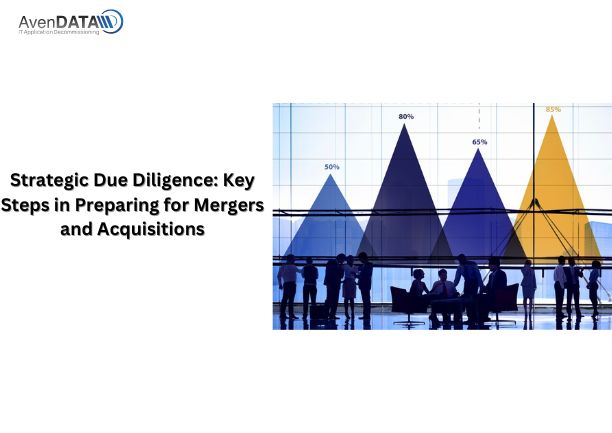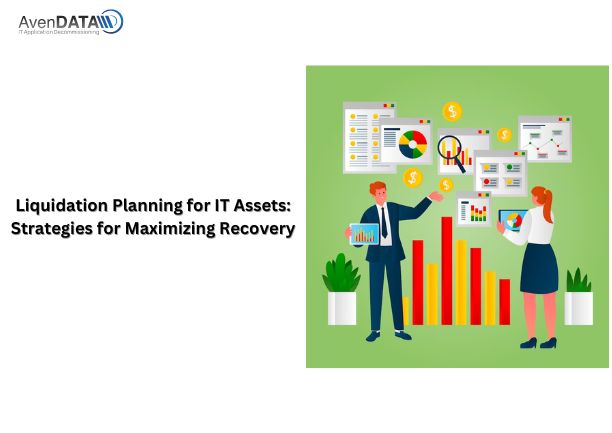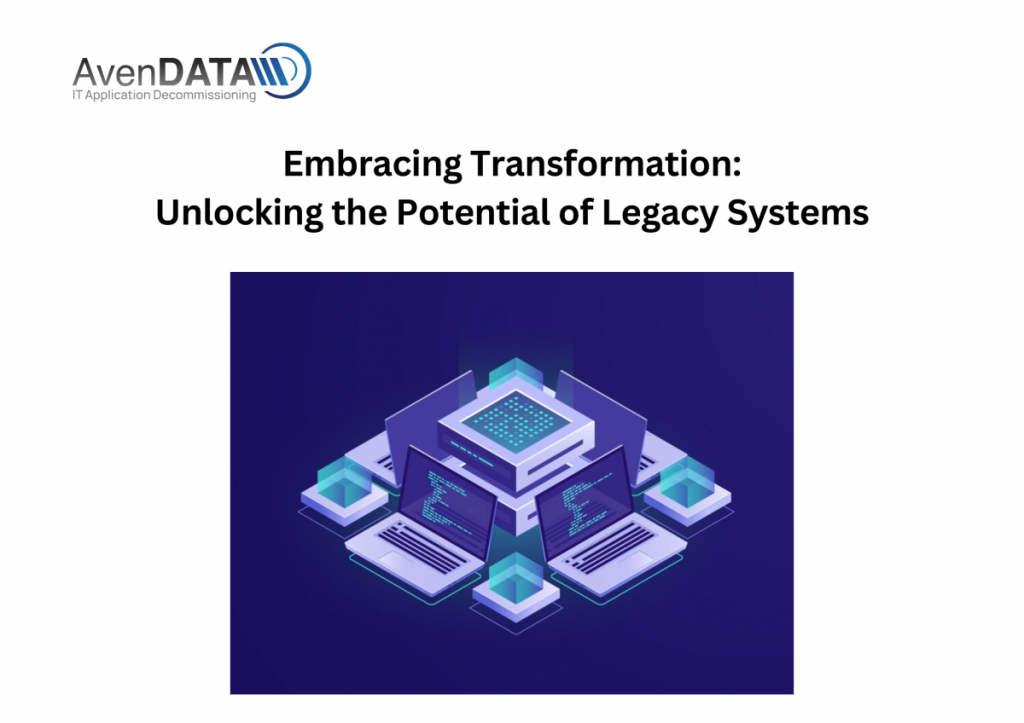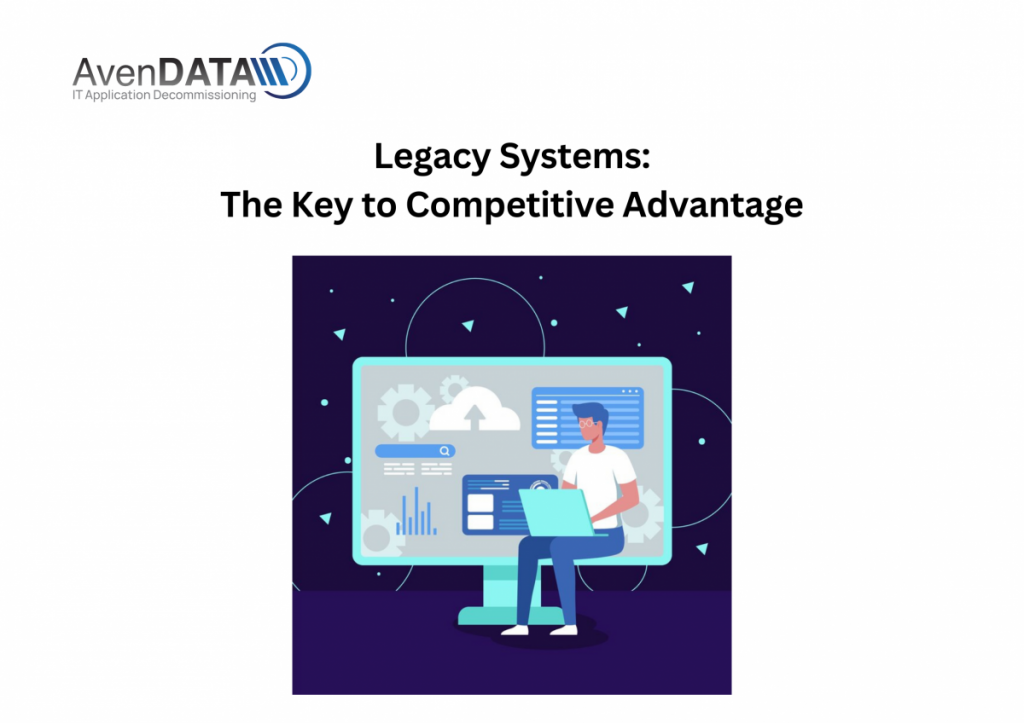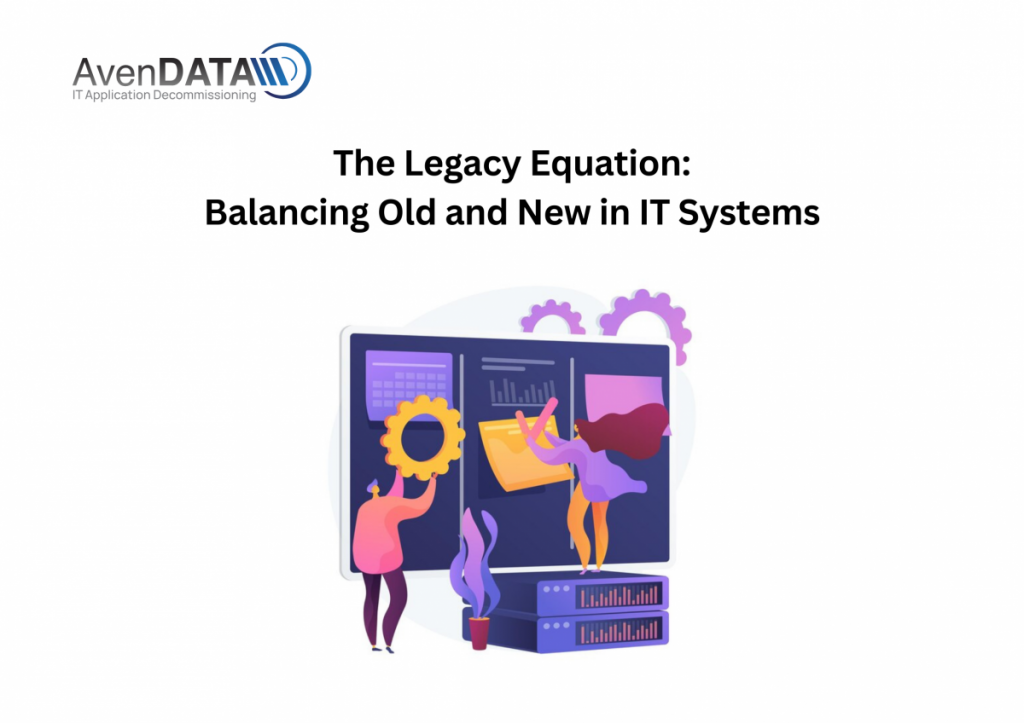Strategic Due Diligence: Key Steps in Preparing for Mergers and Acquisitions
Mergers and acquisitions (M&A) are transformative events that can reshape the trajectory of companies, unlocking new oppor... View MoreStrategic Due Diligence: Key Steps in Preparing for Mergers and Acquisitions
Mergers and acquisitions (M&A) are transformative events that can reshape the trajectory of companies, unlocking new opportunities for growth and expansion. However, the road to a successful M&A deal is fraught with challenges and uncertainties. Strategic due diligence plays a crucial role in mitigating risks, identifying synergies, and ensuring that the deal delivers the intended value to all stakeholders involved. In this blog post, we’ll explore the key steps in strategic due diligence and how they contribute to the success of M&A transactions.
1. Define Objectives and Criteria
Before embarking on an M&A journey, it’s essential for companies to define their objectives and criteria for potential targets. This involves clarifying strategic goals, identifying target markets or industries, and setting specific criteria for evaluating potential acquisitions. By clearly defining objectives and criteria upfront, companies can focus their efforts on opportunities that align with their strategic vision and offer the greatest potential for value creation.
2. Conduct Preliminary Research
Once objectives and criteria are established, companies can begin conducting preliminary research to identify potential acquisition targets. This may involve market analysis, competitor benchmarking, and industry trends analysis to identify opportunities and assess market dynamics. Additionally, companies should leverage their networks and industry contacts to gather intelligence and identify potential targets that may not be publicly known.
3. Perform Financial Analysis
Financial analysis is a critical component of strategic due diligence, helping companies assess the financial health and performance of potential acquisition targets. This involves reviewing financial statements, cash flow projections, and historical performance metrics to evaluate the target’s revenue, profitability, and growth prospects. Financial analysis also helps identify any potential red flags or areas of concern that may impact the valuation or viability of the deal.
4. Assess Operational and Technological Compatibility
In addition to financial analysis, companies should assess the operational and technological compatibility of potential acquisition targets. This involves evaluating factors such as organizational structure, operational processes, and technological infrastructure to determine compatibility with the acquiring company’s systems and processes. Assessing operational and technological compatibility early in the due diligence process can help identify integration challenges and inform post-merger integration planning.
5. Evaluate Legal and Regulatory Compliance
Legal and regulatory compliance is another critical aspect of strategic due diligence. Companies must assess the legal and regulatory landscape in which the target operates and identify any potential risks or liabilities that may arise from non-compliance. This involves reviewing contracts, licenses, permits, and regulatory filings to ensure compliance with applicable laws and regulations. Additionally, companies should assess potential legal risks, such as pending litigation or regulatory investigations, that may impact the deal.
6. Conduct Cultural Assessment
Finally, companies should conduct a cultural assessment to evaluate the compatibility of organizational cultures between the acquiring company and the target. Cultural alignment is essential for successful integration and can significantly impact employee morale, productivity, and retention post-merger. By assessing cultural fit early in the due diligence process, companies can identify potential cultural barriers and develop strategies to address them during the integration phase.
Conclusion
Strategic due diligence is a critical component of the M&A process, enabling companies to assess potential risks and opportunities and make informed decisions about potential acquisitions. By following these key steps in strategic due diligence, companies can minimize risks, identify synergies, and ensure that M&A transactions deliver the intended value to all stakeholders involved.
Know more : https://avendata.com/mergers-acquisitions
#itmergers #avendata #legacysystems
In the corporate landscape, liquidation is an inevitable reality that businesses may face due to various factors such as financial distress, restructuring, or market shifts. When navigating the proces... View MoreIn the corporate landscape, liquidation is an inevitable reality that businesses may face due to various factors such as financial distress, restructuring, or market shifts. When navigating the process of liquidation, one of the critical areas of concern is managing IT assets effectively. From hardware to software licenses, these assets hold significant value, and maximizing recovery during liquidation requires careful planning and execution. In this blog post, we’ll delve into key strategies for liquidation planning specifically tailored to IT assets.
1. Conduct a Comprehensive Inventory: Before embarking on liquidation, it’s crucial to conduct a thorough inventory of all IT assets within the organization. This includes hardware components such as servers, networking equipment, and computers, as well as software licenses, subscriptions, and intellectual property rights. A comprehensive inventory provides clarity on the assets available for liquidation and helps in assessing their market value.
2. Evaluate Asset Utilization and Condition: Assessing the utilization and condition of IT assets is essential for determining their resale value. Assets that are in good working condition and have been well-maintained are likely to fetch higher prices in the secondary market. Conversely, outdated or obsolete equipment may have limited resale value and may need to be disposed of through environmentally responsible means.
3. Prioritize Asset Recovery: Not all IT assets hold the same value, and prioritizing recovery efforts can help maximize returns during liquidation. Identify high-value assets that are in demand in the secondary market and focus on recovering them first. Additionally, consider the resale potential of software licenses, subscription contracts, and other intangible assets.
4. Explore Liquidation Channels: When liquidating IT assets, organizations have several options for disposal, including auctions, resale vendors, asset recovery firms, and online marketplaces. Each channel offers different advantages and disadvantages in terms of speed, convenience, and potential returns. Evaluate these options carefully to determine the most suitable approach for liquidating your IT assets.
5. Ensure Data Security and Compliance: Data security is paramount during the liquidation process, especially when disposing of hardware that may contain sensitive information. Implement robust data erasure procedures to securely wipe all data from storage devices before resale or disposal. Additionally, ensure compliance with relevant regulations such as GDPR, HIPAA, or industry-specific data protection standards.
6. Negotiate Vendor Contracts: Review existing vendor contracts and agreements related to IT assets, including warranties, maintenance contracts, and software licenses. Explore opportunities to renegotiate or terminate these contracts to reduce ongoing expenses during liquidation. Negotiating favorable terms with vendors can help minimize costs and maximize recovery.
7. Plan for Environmental Sustainability: Sustainable disposal of IT assets is increasingly important for organizations seeking to minimize their environmental footprint. Explore options for recycling or repurposing equipment to extend its lifecycle and reduce electronic waste. Partnering with certified e-waste recyclers ensures compliance with environmental regulations and promotes responsible stewardship of resources.
8. Document the Liquidation Process: Maintain detailed records of the liquidation process, including inventory lists, asset valuations, sales contracts, and disposal certificates. Documentation provides transparency and accountability, which is essential for compliance purposes and potential audits. Keep stakeholders informed throughout the liquidation process to maintain trust and credibility.
In conclusion, effective liquidation planning for IT assets requires careful consideration of factors such as asset valuation, resale channels, data security, and environmental sustainability. By following the strategies outlined above, organizations can maximize recovery, minimize risks, and navigate the liquidation process with confidence and efficiency.
Know more : https://avendata.com/liquidation
#liquidation #insolvency #avendata #legacysystems
Embracing Transformation: Unlocking the Potential of Legacy Systems
Introduction: Legacy systems have long been considered the outdated relics of the past, often perceived as barriers to innovation ... View MoreEmbracing Transformation: Unlocking the Potential of Legacy Systems
Introduction: Legacy systems have long been considered the outdated relics of the past, often perceived as barriers to innovation and progress. However, it’s time to challenge this perception and recognize the untapped potential that lies within these systems. In this blog, we explore how organizations can embrace transformation and unlock the hidden value of their legacy systems, paving the way for innovation, efficiency, and sustained success.
Reassessing Legacy Systems: To unlock the potential of IT legacy systems, organizations must first reassess their value and capabilities. Instead of viewing them as obstacles, consider the following perspectives:
a. Institutional Knowledge: Legacy systems often contain valuable institutional knowledge and insights that have been refined over time. This expertise can provide a competitive advantage by enabling organizations to make informed decisions, anticipate customer needs, and optimize processes.
b. Stability and Reliability: Legacy systems, though built on older technologies, have a proven track record of stability and reliability. By preserving and optimizing these systems, organizations can ensure uninterrupted service delivery, build customer trust, and maintain a competitive edge.
c. Integration Capabilities: Legacy systems are often deeply integrated with other applications and processes within an organization. This integration capability can be leveraged to seamlessly connect with new technologies, enabling a gradual and cost-effective modernization process.
Modernizing in Phases: To embrace transformation, organizations can adopt a phased approach to modernizing their legacy systems. This approach allows for a gradual transition, minimizing disruption and maximizing the value derived from existing investments. Key steps in the modernization process include:
a. Assessing Modernization Needs: Identify areas where legacy systems are hindering business growth or efficiency. Determine the specific functionalities or components that require modernization and align them with strategic objectives.
b. Defining a Modernization Strategy: Develop a comprehensive strategy that outlines the timeline, goals, and resources required for modernization. Consider factors such as budget constraints, risk mitigation, and the impact on existing operations.
c. Prioritizing Modernization Efforts: Prioritize the functionalities or components that will yield the most significant benefits when modernized. This may include customer-facing applications, backend processes, or data management systems that have a direct impact on business outcomes.
d. Leveraging Hybrid Solutions: Rather than discarding legacy systems entirely, embrace hybrid solutions that combine the strengths of both legacy and modern technologies. This approach allows for a seamless integration of new capabilities while preserving the core functionality and institutional knowledge of legacy systems.
Implementing Agile Development: Adopting agile development methodologies can greatly facilitate the modernization process of legacy systems. By breaking down the modernization effort into smaller, manageable tasks, organizations can iterate, test, and deploy updates more efficiently. Agile development enables faster response times, increased collaboration, and a higher level of adaptability to evolving business needs.
Investing in Training and Change Management: Successful transformation requires investing in training and change management initiatives. Empower employees with the necessary skills and knowledge to embrace new technologies and processes. Communicate the benefits of modernization, address concerns, and foster a culture of continuous learning and adaptation.
Ensuring Security and Compliance: As organizations modernize their legacy systems, it is crucial to prioritize security and compliance. Implement robust cybersecurity measures, regularly update software, and conduct thorough vulnerability assessments. Ensure compliance with industry regulations and data protection laws to safeguard sensitive information and maintain trust with customers.
Conclusion: Legacy systems should no longer be viewed as barriers to innovation, but rather as untapped opportunities for organizations to embrace transformation. By reassessing the value of legacy systems, adopting a phased modernization approach, implementing agile development methodologies, investing in training and change management, and prioritizing security and compliance, organizations can unlock the potential of their legacy systems. Through this transformation, organizations can drive innovation, improve efficiency, and position themselves for sustained success in the dynamic and ever-evolving business landscape. Embrace the power of transformation, and unlock the hidden potential within your legacy systems.
Know more : https://avendata.com/archiving-legacy-systems
#avendata #legacysystems #legacysystem #itsystems #itlegacysystems
Insolvency Impact on IT Legacy Systems: Risks and Opportunities
In the fast-paced world of business, insolvency can strike unexpectedly, posing significant challenges to organizations of all sizes. W... View MoreInsolvency Impact on IT Legacy Systems: Risks and Opportunities
In the fast-paced world of business, insolvency can strike unexpectedly, posing significant challenges to organizations of all sizes. When a company faces insolvency, its IT legacy systems often become a focal point of concern. These systems, which may have been meticulously built and maintained over the years, suddenly face uncertain futures. In this article, we’ll explore the risks and opportunities that insolvency presents for IT legacy systems and how businesses can navigate this challenging terrain.
Risks:
Data Loss: One of the most immediate risks associated with insolvency is the potential loss of valuable data stored within legacy systems. Without proper management and oversight, critical information may be lost or compromised during the liquidation process.
Security Breaches: Insolvency can create vulnerabilities in IT systems, making them more susceptible to security breaches and cyberattacks. Hackers may exploit weaknesses in outdated software or infrastructure, leading to data breaches and financial losses.
Compliance Concerns: Insolvency often triggers a flurry of legal and regulatory obligations, including data protection laws, industry standards, and contractual agreements. Failing to meet these compliance requirements can result in legal repercussions and damage to the company’s reputation.
Operational Disruption: As a company navigates insolvency proceedings, its day-to-day operations may be disrupted, impacting the availability and functionality of IT systems. This disruption can hinder productivity, strain customer relationships, and impede business continuity.
Opportunities:
Modernization Initiatives: Insolvency can provide an opportunity for organizations to reassess their IT infrastructure and explore modernization initiatives. By investing in newer technologies and platforms, businesses can enhance efficiency, agility, and competitiveness.
Cost Optimization: Insolvency forces companies to scrutinize their expenses and identify areas for cost optimization. By decommissioning outdated or redundant IT systems, organizations can reduce maintenance costs and streamline operations.
Data Consolidation: Insolvency often involves consolidating assets and streamlining operations to maximize value. This presents an opportunity for businesses to rationalize their data holdings, consolidate disparate systems, and improve data management practices.
Agile Adaptation: In times of financial distress, companies must be agile and adaptable to survive. Insolvency can prompt organizations to embrace change, innovate new business models, and pivot toward more sustainable practices.
Navigating the Challenges:
Strategic Planning: To mitigate the risks associated with insolvency, organizations must develop strategic plans for managing their IT legacy systems. This includes conducting thorough assessments, identifying critical assets, and prioritizing data protection efforts.
Collaboration and Communication: Effective communication and collaboration between stakeholders are essential for navigating insolvency proceedings. IT teams, legal advisors, and financial experts must work together to address challenges and seize opportunities.
Data Protection Measures: Implementing robust data protection measures is paramount to safeguarding sensitive information during insolvency. This may involve data encryption, access controls, regular backups, and compliance with relevant regulations.
Continuous Monitoring: Insolvency is a dynamic process that requires continuous monitoring and adaptation. Organizations must stay vigilant, anticipate potential risks, and adjust their strategies accordingly to ensure the smooth operation of IT legacy systems.
In conclusion, while insolvency poses significant risks to IT legacy systems, it also presents opportunities for organizations to reassess their technology infrastructure, optimize costs, and embrace innovation. By adopting strategic planning, collaboration, and data protection measures, businesses can navigate the challenges of insolvency and emerge stronger and more resilient in the long run.
Know more : https://avendata.com/liquidation
#liquidation #itliquidation #avendata #legacysystems
buy verified payoneer account
$150.00 – $700.00
Buy Verified Payoneer Account With 15 Day`s Replacement Guarantee.
... View Morebuy verified payoneer account
$150.00 – $700.00
Buy Verified Payoneer Account With 15 Day`s Replacement Guarantee.
Features For Our Services:
âœ”ï¸ 100% Satisfaction & Recovery Guaranteed
✔ï¸US, UK, CA, Na, AUS Any Countries Phone Verify
âœ”ï¸ Payoneer Email and password
✔ï¸Verify by: Full SSN/NID Provided
âœ”ï¸ Verify by: Phone Access
âœ”ï¸ Verify by: (Bank Verified)
âœ”ï¸ Verify by: VCC (Card Verified)
✔ï¸Verify by: Phone Access
âœ”ï¸ Date of Birth Provided
✔ï¸Driving License Scan Copy
✔ï¸Bank Statement copy provided
✔ï¸Full Completed Profiles
âœ”ï¸ 24/7 Customer Support
âœ”ï¸ Documents [NID card scan copy + utility bill scan copy]
Contact us–
Email: topusamarket@gmail.com
WhatsApp: +1 (931) 771-2966
Telegram: @Topusamarket
Skype: live:.cid.282293c2e8fee08
#1 #2 #3 #health #buy #hospital #avendata #thám_tá»_đức_nghÄ©a #khotaiphammem #legacysystems #4 #transportation #healthcare #business #dịch_vụ_thám_tá»_đức_nghÄ©a #trophysupplier #trophy #customtrophy #trophysuppliermalaysia #crystalplaque #trophies #trophymalaysia #itlegacysystems #emergency #trophymalaysiasupplier #trading #business #Payoneer
https://topusamarket.com/product/buy-verified-payoneer-account/
buy verified Payoneer account
Buy Verified Payoneer account at a Reasonable Price. Bank and Document Verified Account With 15 day`s Replacement Guarantee.
SAP HANA Performance Optimization: Enhancing Speed and Efficiency in Decommissioning
In today’s rapidly evolving business landscape, organizations are continually seeking ways to optimize their ope... View MoreSAP HANA Performance Optimization: Enhancing Speed and Efficiency in Decommissioning
In today’s rapidly evolving business landscape, organizations are continually seeking ways to optimize their operations and maximize efficiency. When it comes to legacy system decommissioning, speed and efficiency are paramount to ensure a smooth transition and minimize disruption to business processes. SAP HANA, with its cutting-edge in-memory computing capabilities, offers a powerful platform for accelerating decommissioning processes and optimizing performance. In this blog, we’ll explore how organizations can leverage SAP HANA performance optimization techniques to enhance speed and efficiency in decommissioning initiatives.
Understanding SAP HANA Performance Optimization
SAP HANA is renowned for its exceptional performance, thanks to its innovative in-memory computing architecture, columnar storage, and advanced processing capabilities. By storing data in-memory and processing it in parallel, SAP HANA can deliver lightning-fast query response times and enable real-time analytics on large datasets. When applied to decommissioning projects, SAP HANA performance optimization techniques can significantly accelerate data migration, transformation, and analysis tasks, leading to faster project completion and cost savings.
Key Strategies for SAP HANA Performance Optimization in Decommissioning:
Data Partitioning and Distribution: SAP HANA allows organizations to partition and distribute data across multiple nodes to leverage parallel processing capabilities and maximize system performance. By strategically partitioning data based on usage patterns, organizations can optimize query performance and accelerate data retrieval and processing tasks during decommissioning.
Columnar Storage Optimization: SAP HANA’s columnar storage architecture minimizes data footprint and enhances query performance by storing data in columns rather than rows. By compressing and indexing columnar data, organizations can achieve significant storage savings and improve query execution times, resulting in faster data retrieval and analysis during decommissioning.
Memory Management and Caching: SAP HANA’s intelligent memory management and caching mechanisms optimize memory utilization and accelerate data access by caching frequently accessed data and preloading query results into memory. By configuring memory parameters and cache settings, organizations can ensure optimal performance and responsiveness during decommissioning tasks.
Parallel Processing and Multithreading: SAP HANA leverages parallel processing and multithreading techniques to execute queries and data processing tasks in parallel across multiple CPU cores. By harnessing the power of parallelism, organizations can distribute workloads efficiently and maximize CPU utilization, leading to faster query execution and data processing in decommissioning projects.
Query Optimization and Indexing: SAP HANA’s query optimization engine automatically optimizes query execution plans and selects the most efficient access paths based on data distribution and query predicates. Additionally, organizations can create custom indexes and materialized views to further optimize query performance and accelerate data retrieval during decommissioning.
Benefits of SAP HANA Performance Optimization in Decommissioning:
Faster Data Migration: By accelerating data transfer and processing tasks, SAP HANA performance optimization techniques enable faster data migration from legacy systems to target environments, reducing downtime and minimizing disruption to business operations.
Improved Query Performance: SAP HANA’s superior query performance ensures faster data retrieval and analysis, enabling organizations to make informed decisions quickly and efficiently during decommissioning projects.
Reduced Resource Consumption: By optimizing resource utilization and minimizing data footprint, SAP HANA performance optimization techniques help organizations reduce hardware requirements, lower infrastructure costs, and achieve greater operational efficiency in decommissioning initiatives.
Enhanced Scalability and Flexibility: SAP HANA’s scalable architecture and flexible deployment options allow organizations to scale their decommissioning efforts seamlessly to accommodate growing data volumes and evolving business needs, ensuring long-term scalability and flexibility.
Conclusion:
SAP HANA performance optimization techniques offer a powerful toolkit for organizations seeking to accelerate decommissioning projects and maximize efficiency. By leveraging data partitioning, columnar storage, memory management, parallel processing, and query optimization techniques, organizations can unlock the full potential of SAP HANA’s in-memory computing platform and achieve faster data migration, analysis, and decision-making in decommissioning initiatives. With SAP HANA as a strategic ally, organizations can streamline decommissioning processes, minimize downtime, and unlock new opportunities for innovation and growth.
Know more : https://avendata.com/sap-hana
#saphana #avendata #legacysystems
Legacy Systems: The Key to Competitive Advantage
Introduction: In today’s fast-paced technological landscape, organizations often perceive legacy systems as outdated and inefficient. However, it is... View MoreLegacy Systems: The Key to Competitive Advantage
Introduction: In today’s fast-paced technological landscape, organizations often perceive legacy systems as outdated and inefficient. However, it is time to challenge this conventional wisdom. IT Legacy systems, built on a foundation of reliability, stability, and institutional knowledge, can actually be the key to gaining a competitive advantage. This blog explores how legacy systems can provide unique benefits and unlock opportunities for organizations to thrive in the modern business landscape.
Unmatched Domain Expertise: Legacy systems are often deeply ingrained in an organization’s operations, reflecting years or even decades of industry-specific knowledge and insights. These systems are finely tuned to address the unique challenges and requirements of the business, making them a valuable repository of domain expertise. Leveraging this expertise can provide organizations with a competitive edge, as it enables them to make informed decisions, optimize processes, and deliver tailored solutions to customers.
Stability and Reliability: One of the hallmarks of legacy systems is their stability and reliability. These systems have a proven track record of supporting critical business functions, often serving as the backbone of operations for years. By maintaining and optimizing legacy systems, organizations can ensure uninterrupted and consistent service delivery to their customers, establishing a reputation for reliability that sets them apart from competitors. Reliability and stability contribute to customer trust and loyalty, key factors for long-term success.
Cost-Effectiveness: While legacy systems may require ongoing maintenance, they often operate at a lower cost compared to implementing entirely new systems. The initial investment in legacy systems has already been made, and organizations can continue to extract value from these systems by optimizing performance, enhancing security measures, and gradually modernizing specific components. This cost-effectiveness frees up resources that can be allocated to other strategic initiatives, providing a competitive advantage in terms of financial stability and flexibility.
Seamless Integration: Legacy systems have historically been built to integrate with other systems and processes within an organization. These systems often have well-established interfaces and integrations with other applications and platforms, allowing for seamless data exchange and interoperability. This integration capability provides organizations with the advantage of leveraging existing infrastructure and data assets while incorporating new technologies and innovations into their IT ecosystem.
Incremental Modernization: Rather than discarding legacy systems entirely, organizations can adopt an incremental modernization approach. This strategy allows for the preservation of the core functionality and value of legacy systems while gradually introducing new technologies and architectures. Incremental modernization minimizes disruption, reduces implementation risks, and maximizes the value derived from legacy systems.
Security and Compliance: Legacy systems, although built on older technologies, can still meet security and compliance requirements with the appropriate measures in place. By implementing robust cybersecurity measures, regular updates, and monitoring protocols, organizations can ensure the protection of sensitive data and compliance with industry regulations. This commitment to security and compliance enhances customer trust and strengthens the organization’s competitive position.
Conclusion: Contrary to popular belief, legacy systems hold a wealth of untapped potential that can provide organizations with a competitive advantage. The unmatched domain expertise, stability, reliability, cost-effectiveness, seamless integration, and the opportunity for incremental modernization are just a few of the benefits that legacy systems offer. By understanding and leveraging the strengths of legacy systems, organizations can harness their unique advantages to drive innovation, optimize processes, deliver exceptional customer experiences, and maintain a competitive edge in the ever-evolving business landscape. Embrace and optimize your legacy systems, and unlock the potential for sustained success and growth.
Know more : https://avendata.com/archiving-legacy-systems
#avendata #legacysystems #legacysystem #itsystems #itlegacysystems
The Legacy Equation: Balancing Old and New in IT Systems
Introduction: In the realm of IT systems, organizations often find themselves grappling with the challenge of balancing legacy systems, which ... View MoreThe Legacy Equation: Balancing Old and New in IT Systems
Introduction: In the realm of IT systems, organizations often find themselves grappling with the challenge of balancing legacy systems, which have long been the backbone of their operations, with the need to embrace new technologies and innovations. This delicate equilibrium is crucial to ensure smooth operations, maximize efficiency, and foster continued growth. In this blog, we explore the legacy equation and shed light on strategies for effectively balancing old and new in IT systems.
Understanding Legacy Systems: IT Legacy systems, often built on outdated technologies, hold valuable institutional knowledge and are deeply ingrained in an organization’s operations. They have proven their reliability over time and are trusted to handle critical business functions. However, they also come with certain limitations:
a. Inflexibility: Legacy systems can be rigid and challenging to modify or integrate with modern technologies. This lack of flexibility can hinder innovation and the ability to adapt to evolving business requirements.
b. Cost of Maintenance: Maintaining legacy systems can be costly, as they often require specialized expertise, regular updates, and ongoing support. These expenses can strain resources and divert funds from strategic initiatives.
c. Security Risks: Outdated systems may lack robust security features and are more susceptible to cyber threats. This poses a significant risk to sensitive data and exposes organizations to potential breaches and regulatory non-compliance.
Embracing New Technologies: While legacy systems have their merits, embracing new technologies is essential to stay competitive and meet evolving business needs. Here are strategies for effectively incorporating new technologies into your IT ecosystem:
a. Identify Pain Points: Assess your organization’s pain points and areas where legacy systems are holding back progress. Identify specific business areas that could benefit from modernization, such as customer experience, data analytics, or workflow automation.
b. Prioritize Modernization: Prioritize which systems or processes to modernize based on their impact on business outcomes and potential return on investment. This approach allows for a phased transition and minimizes disruption.
c. Cloud Adoption: Explore the benefits of cloud computing, which offers scalability, cost efficiency, and enhanced collaboration. Migrating certain functions or applications to the cloud can help modernize your IT infrastructure while preserving legacy systems in the short term.
d. Hybrid Approach: Consider adopting a hybrid IT approach that combines legacy systems with newer technologies. This approach allows organizations to leverage the strengths of both systems while gradually transitioning to a more modern framework.
e. Application Programming Interfaces (APIs): APIs enable seamless integration between legacy and modern systems, facilitating data exchange and interoperability. By connecting legacy systems with newer applications through APIs, organizations can extend the lifespan of their legacy investments while gaining the benefits of modern functionality.
Mitigating Risks and Challenges: As you strive to strike a balance between old and new in your IT systems, it is important to address potential risks and challenges:
a. Security Measures: Implement robust security measures to protect both legacy and modern systems. Regular vulnerability assessments, encryption, and access controls are crucial to safeguarding your IT infrastructure against cyber threats.
b. Data Migration: When modernizing, ensure a smooth transition of data from legacy systems to new platforms. Develop a comprehensive data migration plan that includes data cleansing, validation, and testing to maintain data integrity.
c. Change Management: Proper change management is vital to ensure a smooth transition from legacy to modern systems. Involve stakeholders, communicate the benefits of the transition, and provide training and support to help employees adapt to the new technologies.
d. Preservation of Institutional Knowledge: Legacy systems often contain valuable institutional knowledge. Ensure that this knowledge is documented and transferred to new systems or shared with relevant stakeholders to preserve its value.
Leveraging the Best of Both Worlds: By striking the right balance between old and new in your IT systems, organizations can leverage the best of both worlds. Legacy systems provide stability, reliability, and institutional knowledge, while new technologies offer innovation, scalability, and agility. The key lies in identifying the right areas for modernization and strategically integrating new technologies to enhance the overall efficiency and effectiveness of your IT ecosystem.
Conclusion: The legacy equation is a delicate balance that organizations must strike between their trusted legacy systems and the need to embrace new technologies. By understanding the strengths and limitations of legacy systems, prioritizing modernization efforts, and mitigating associated risks, organizations can effectively incorporate new technologies while leveraging the institutional knowledge embedded in their legacy systems. With careful planning, organizations can navigate the path of IT modernization and achieve a harmonious equilibrium that drives innovation, efficiency, and growth.
Know more : https://avendata.com/archiving-legacy-systems
#avendata #legacysystems #legacysystem #itsystems #itlegacysystems
Buy Verified Cash App Account
$150.00 – $750.00
https://topusamarket.com/product/buy-verified-cash-app-account/
Buy Verified Cash App Account With Replacement Guarantee.
... View MoreBuy Verified Cash App Account
$150.00 – $750.00
https://topusamarket.com/product/buy-verified-cash-app-account/
Buy Verified Cash App Account With Replacement Guarantee.
Feature for this services
â˜‘ï¸ Email Login Access
â˜‘ï¸ 100% BTC Withdrawal Enabled
☑ï¸Bank Added
☑ï¸Card Verified
☑ï¸Full SSN Provided
â˜‘ï¸ Phone Access
☑ï¸Driving License Scan Copy
â˜‘ï¸ Date of Birth Provided
â˜‘ï¸ First Delivery
â˜‘ï¸ 24/7 Customers Support
☑ï¸15 Days Replacement Guarantee.
☑ï¸Replace Guarantee Up-To 3 Times for Repeat Customers
Contact us–
Email: topusamarket@gmail.com
WhatsApp: +1 (931) 771-2966
Telegram: @Topusamarket
Skype: live:.cid.282293c2e8fee08
#thám_tá»_đức_nghÄ©a #buy #health #dịch_vụ_thám_tá» #avendata #dịch_vụ_thám_tá»_đức_nghÄ©a #hospital #1 #legacysystems #business #phần_má»m #phần_má»m_văn_phòng #trophies #crystalplaque #2 #trophysuppliermalaysia #3 #customtrophy #transportation #trophy #healthcare #itlegacysystems #trophysupplier #trophymalaysia #trophymalaysiasupplier
Buy Verified Cash App Account BTC Enabled Cash App Account
Buy Verified Cash App Account. Buy BTC Enabled Cash App Account 100% Safe and Secure. 15 Day`s Replacement Guarantee up To 3 Times
page=1&year=&month=&hashtagsearch=Legacysystems
Load More


